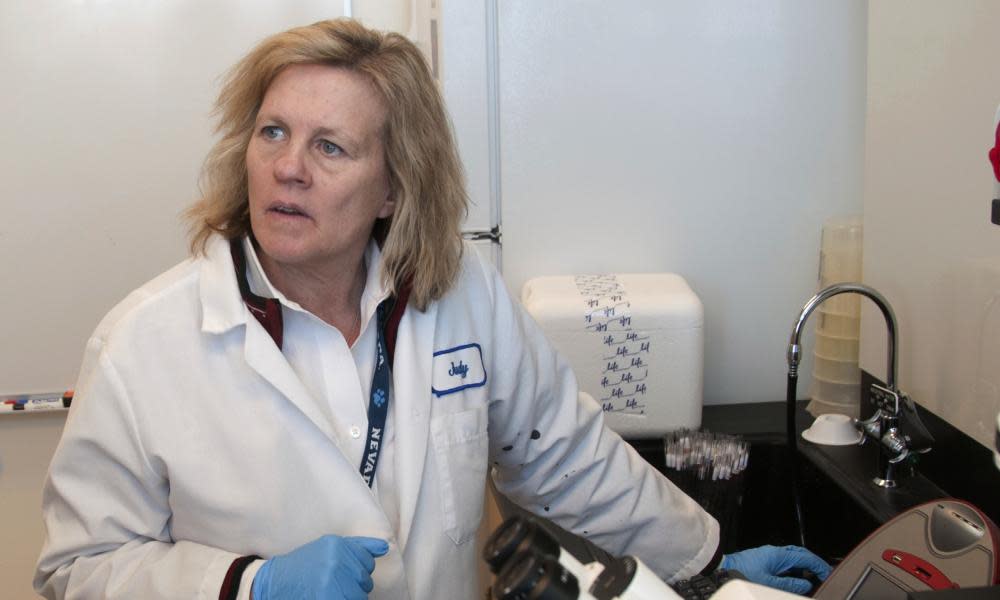How the 'Plandemic' conspiracy theory took hold

To have one viral sensation, Oscar Wilde might have said, is unfortunate. But to have two smacks of carelessness. And that’s what we have. The first is Covid-19, about which much printer’s ink has already been spilled. The second is Plandemic, a 26-minute “documentary” video featuring Dr Judy Mikovits, a former research scientist and inveterate conspiracy theorist who blames the coronavirus outbreak on big pharma, Bill Gates and the World Health Organization. She also claims that the National Institute of Allergy and Infectious Diseases (which is headed by Dr Anthony Fauci) buried her research showing vaccines weaken people’s immune systems and made them more vulnerable to Covid-19. Just to round off the accusations, Mikovits claims that wearing masks is dangerous because it “literally activates your own virus”. And, if proof were needed that the pharma-Gates-scientific-elite cabal were out to get her, the leading journal Science in 2011 retracted a paper by her on a supposed link between a retrovirus and chronic fatigue syndrome that it had accepted in 2009.
The video went online on 4 May when its maker, Mikki Willis, a hitherto little-known film producer, posted it to Facebook, YouTube, Vimeo and a separate website set up to share the video. For three days it built up a head of steam on Facebook pages dedicated to conspiracy theories, many of which linked to the video on YouTube. By 11 May it had been viewed more than 8m times on YouTube, Facebook, Twitter and Instagram, and had generated countless other posts on websites and social media. Later that day YouTube, Vimeo and Facebook took down the video, and in theory it disappeared from the internet – only of course it hadn’t, in the time-honoured way of subversive material in the networked world. The cognitive pathogen had escaped into the wild and was spreading virally.
Conspiracy theory sites are the most powerful engines of disinformation around
As it did so, a number of journalists and network scientists began to map the route by which this niche obsession made it into the big time. A New York Times team traced it back to a Facebook page dedicated to QAnon, a rightwing conspiracy theory, which has 25,000 members, headed with the clickbait injunction “Exclusive Content, Must Watch”. The video went from being viewed directly on YouTube to people linking out to it on Facebook, Twitter and other social media channels, with each link increasing the possibility that it would make the next big jump.
On the afternoon of 5 May, the link was shared by a celebrity medic who had appeared on Oprah and had half a million followers on Facebook. Later that evening Plandemic popped up on a large-scale political page on Facebook. The page, reports the NYT, “was for Reopen Alabama, which has over 36,000 members and was part of the movement by Americans who wanted to lift shelter-in-place orders. Once the video appeared on that page, which was linked to dozens of other Reopen America groups, it quickly began spreading to the pages of those other groups in a kind of forceful multiplier effect.”
The next day it was shared by a Republican politician in Ohio with her 20,000 Facebook followers. “If you watch ANYTHING on my page,” she wrote, “it needs to be this.” This then brought the video into the Republican mainstream, which meant that it was everywhere in semi-polite rightwing society.
The NYT reconstruction of Plandemic’s meteoric rise was complemented by the different approach taken by Erin Gallagher, a social media analyst who used analytical and graphical tools often used by data scientists. She looked for public Facebook posts containing the keywords “Plandemic” or “Judy Mikovits” and then started to draw the network graphs that emerged from those data sets.
The most interesting thing about the resulting social media networks is the centrality of certain conspiracist Facebook pages and groups and YouTube channels in them. For example, QAnon looms large and central. So do Collective Action Against Bill Gates, ChemtrailsGlobalSkywatch, Fall of the Cabal, Truth Revolution, and even our old friend David Icke and his YouTube channel.
This confirms something we’ve known since at least 2016, namely that conspiracy theory sites are the most powerful engines of disinformation around. And when they have a medical conspiracy theory to work with, then they are really in business. “Medical and health conspiracy theories do well,” said Prof Eric Oliver, a scholar who studies them, “because oftentimes they’re not explicitly ideological in the way that other conspiracy theories are. They tend to cross ideological domains.” In public opinion surveys in the US, he found that 40% of those polled agree with the proposition that “the Food and Drug Administration has been deliberately withholding natural cures for cancer because of secret pressure from the pharmaceutical industry.” And support for it comes from across the American political spectrum.
All of which suggests that when a Covid-19 vaccine does eventually arrive, conspiracy theorists will have a field day. Assuming they haven’t all died of the virus first.
What I’ve been reading
Big tech muscles in
How Google and Apple outflanked governments in the race to build coronavirus apps – an excellent report by Politico’s European edition.
Vintage lockdown diaries
“The Very First Pandemic Blogger”. A lovely essay on Samuel Pepys, by Andrew Sullivan in New York Magazine’s Intelligencer column.
History in the making
A fascinating insight in the London Review of Books into how the great historian Keith Thomas goes about his work.

 Yahoo News
Yahoo News 
